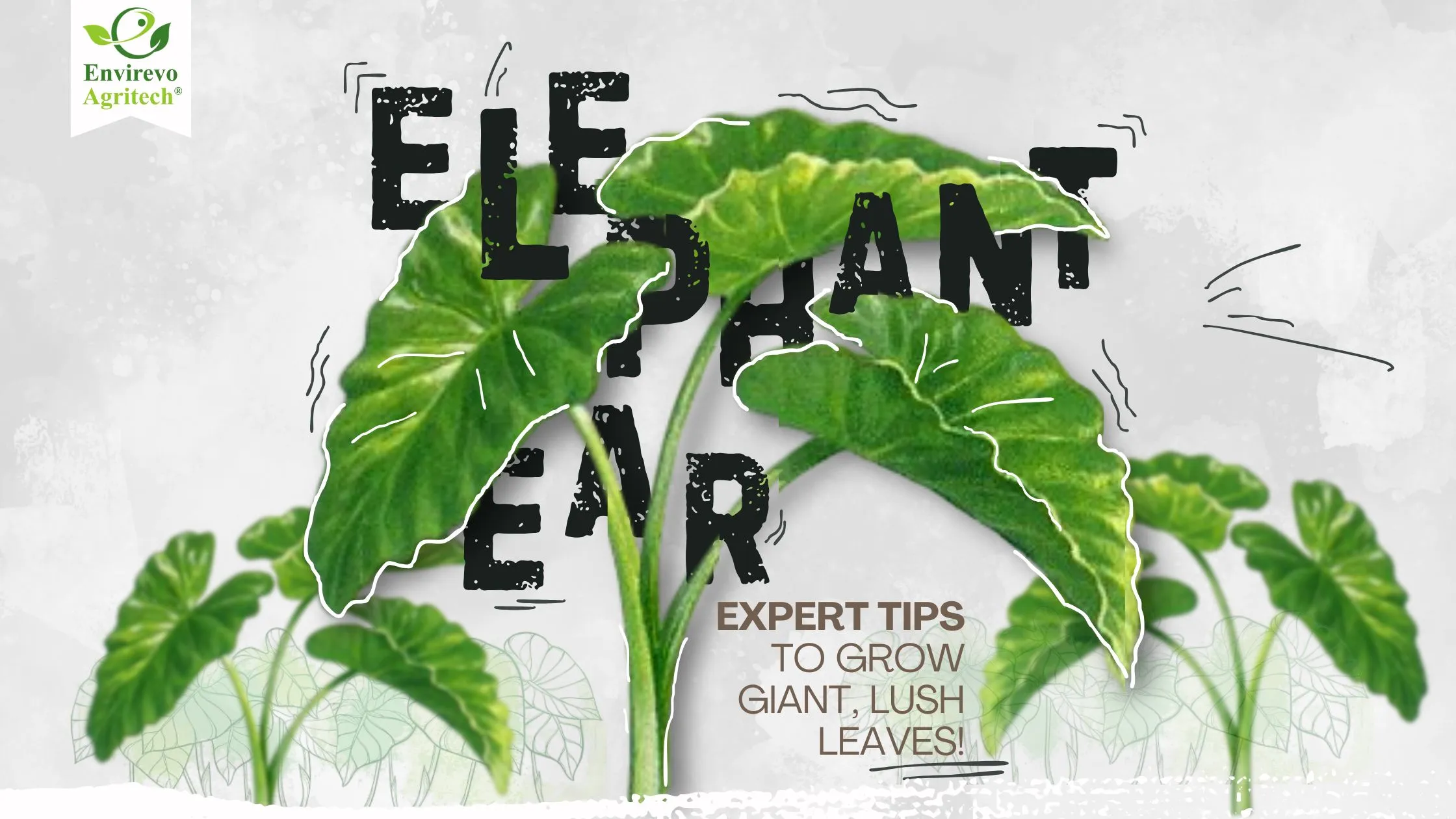Table of Contents
Elephant ear plants are showstoppers in the plant world, adored for their enormous, heart-shaped leaves that evoke a tropical jungle vibe. Whether you’re an indoor plant enthusiast or a garden lover aiming for bold foliage, these plants—belonging to genera like Colocasia, Alocasia, and Xanthosoma—are a lush addition to any space. But achieving those iconic, oversized leaves requires specific growing conditions and attentive care.
In this comprehensive guide, we will cover every aspect of elephant ear plant care to help you grow thriving plants with giant, vibrant foliage. From light and water needs to fertilizing, soil preferences, pest control, and propagation—consider this your go-to resource.
What Are Elephant Ear Plants?
Elephant ears are a group of tropical perennial plants known for their dramatic foliage that can span several feet in length. Commonly found in humid, warm regions, they thrive in USDA hardiness zones 8–11. The term “elephant ear” is a general name referring to several species across three main genera:
- Colocasia: Also known as taro, this genus prefers moist or even waterlogged conditions. Their leaves typically point downward.
- Alocasia: These tend to have more upright leaves and grow well in slightly drier conditions.
- Xanthosoma: Similar in appearance but often distinguished by leaf shape and growth habits.


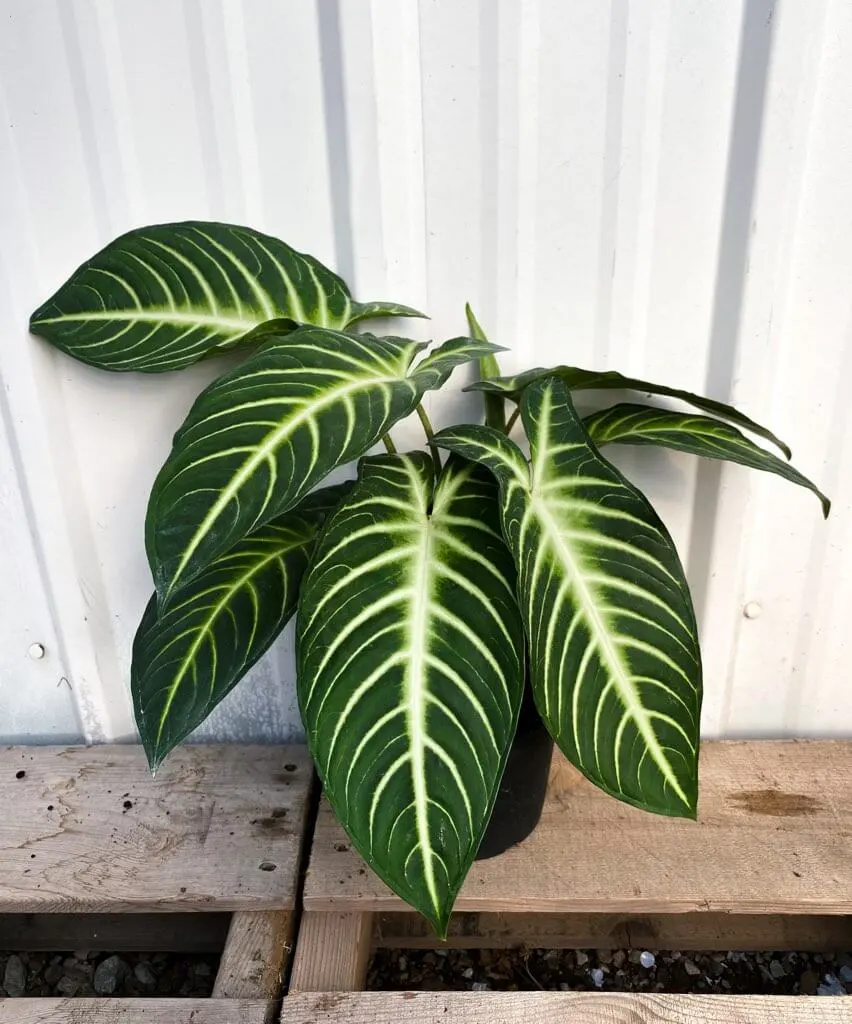
While the visual appeal is undeniable, the care requirements can be specific and, if met, will result in an incredibly fast-growing plant with leaves that look like they belong in a rainforest.
| Feature | Details |
|---|---|
| Common Name | Elephant Ear |
| Botanical Name | Colocasia, Alocasia, Xanthosoma, Caladium |
| Plant Type | Herbaceous perennial (often grown as annual) |
| Hardiness Zones | USDA Zones 8–11 (varies by species) |
| Mature Size | 3 to 8 feet tall; 2 to 6 feet wide |
| Sun Exposure | Partial shade to full sun (species dependent) |
| Soil Type | Rich, well-drained, consistently moist soil |
| Soil pH | Slightly acidic to neutral (pH 5.5 to 7.0) |
| Water Needs | High – keep soil consistently moist |
| Native Range | Tropical Asia, Southeast Asia, Central & South America |
| Bloom Time | Rarely blooms indoors; summer blooms outdoors |
Elephant Ear Plant Care
Best Light Conditions for Elephant Ear Plant
Lighting plays a crucial role in ensuring your elephant ears grow large and lush. These plants love light, but the type and intensity of light can influence their growth rate and overall health.
- Outdoor Light Requirements: In outdoor settings, elephant ears thrive best in partial shade to filtered sunlight. While they can tolerate full sun, especially Colocasia varieties, excessive exposure can lead to leaf scorch, especially in dry climates.
- Indoor Light Conditions: When grown indoors, place them near bright, indirect light sources. A north- or east-facing window works well. Avoid placing them in direct sunlight, as this can cause the leaves to burn.
Supplementing with grow lights can help indoor plants flourish, especially during winter months when natural sunlight is limited. Aim for about 6-8 hours of light per day.
Soil Requirements for Growing Healthy Elephant Ears
The soil medium directly affects nutrient uptake, root health, and moisture retention—all critical factors for the successful care of elephant ears.
Elephant ears prefer rich, loamy, and well-draining soil with high organic content. A mixture of potting soil, compost, and perlite or coarse sand works well. For outdoor planting, amend heavy clay soils with organic matter to improve drainage. These plants thrive in slightly acidic to neutral pH levels, ideally between 5.5 and 7.0. Regular soil testing ensures you’re not inadvertently growing in overly alkaline soil, which can limit nutrient absorption. Use a high-quality potting mix with added compost or peat moss in containers. Regularly refresh the soil every 1-2 years to maintain fertility.
How to Water Elephant Ear Plants Properly
Watering is arguably one of the most critical elements in elephant ear plant care. These plants have large leaves and expansive root systems that demand consistent moisture.
In garden beds, water your elephant ears deeply and consistently, keeping the soil evenly moist but not soggy. During the growing season, this may mean watering 2–4 times a week, depending on weather conditions and soil drainage. For container-grown or indoor plants, water thoroughly when the top inch of soil feels dry. Allow excess water to drain to prevent root rot. Use saucers or trays to catch runoff but empty them promptly to avoid standing water.
- Signs of Improper Watering
- Overwatering: Yellowing leaves, mushy stems, moldy soil.
- Underwatering: Drooping, curling leaves, dry soil.
Fertilizer Tips for Giant, Lush Leaves
To grow the enormous, eye-catching leaves elephant ears are known for, proper fertilization is key. These plants are heavy feeders, especially during the peak growing season. Use a balanced, slow-release fertilizer with a higher nitrogen content (such as 20-10-10) to promote lush foliage. Organic options like fish emulsion or compost tea also work well.
- Apply slow-release fertilizer every 6-8 weeks during the growing season (spring to late summer).
- For liquid fertilizers, feed every 2–4 weeks, ensuring to dilute as per label instructions.
- Important Tips: Avoid over-fertilization, which can lead to salt buildup in the soil and damage roots. Flush container soil with plain water every few months to remove excess salts.
Temperature & Humidity Needs
Being tropical natives, elephant ear plants thrive in warm and humid conditions. Temperature and humidity directly impact growth rate, leaf size, and overall vitality.
- Optimal range: 65°F to 85°F (18°C to 29°C)
- Growth slows below 60°F and stops altogether under 50°F.
- In colder zones, plants will enter dormancy or may die back entirely.
Aim for a humidity level of at least 50%. In dry indoor environments, increase humidity using:
- Humidifiers
- Pebble trays filled with water
- Grouping plants together
- Occasional misting (avoid misting Alocasia varieties directly to prevent fungal issues)
Maintaining these conditions will help prevent brown leaf edges and promote vigorous leaf development.
Pruning Elephant Ear Plants
Start by regularly removing yellow, wilted, or damaged leaves at the base of the stem using sterilized pruning shears. This not only improves airflow around the plant but also redirects energy to newer growth. In colder climates, elephant ears die back in fall—cut the foliage down to a few inches above the soil after the first frost, especially if you’re overwintering tubers indoors. For indoor elephant ears, light trimming can keep the plant compact and manageable without harming it.
Always wear gloves when pruning, as elephant ears contain calcium oxalate crystals that can irritate the skin. After pruning, dispose of the debris carefully to avoid attracting pests or spreading fungal spores.
Popular Elephant Ear Plant Varieties
1. Colocasia esculenta (Taro)
One of the most recognized and widely grown elephant ear varieties, Colocasia esculenta features large, heart-shaped leaves that point downward and have a lush, tropical look. These plants thrive in very moist to even waterlogged conditions, making them ideal for boggy areas or water gardens.
- Leaf Direction: Downward-facing
- Color Variations: Bright green, dark purple, and variegated types
- Popular Cultivars:
- Black Magic: Striking deep purple to almost black foliage.
- Mojito: Mottled green and purple leaves, highly decorative.
- Illustris: Velvety green leaves with dark purple-black veins.
- Best Use: Water gardens, large containers, tropical borders
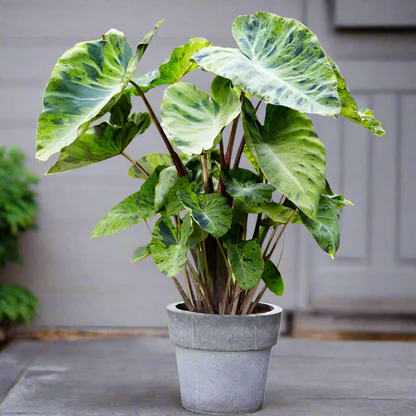
2. Alocasia macrorrhiza (Giant Taro or Upright Elephant Ear)
Alocasia plants are often known for their upright, arrowhead-shaped leaves that stand tall and command attention. Unlike Colocasia, their leaves typically point upward, giving them a more architectural look.
- Leaf Direction: Upright or upward-facing
- Texture: Glossy, often thick and leathery
- Popular Cultivars:
- Alocasia ‘Portora’: Hybrid with massive, ruffled leaves and a sturdy growth habit.
- Alocasia ‘Polly’: Compact variety with deep green leaves and pronounced white veins.
- Alocasia ‘Borneo Giant’: One of the largest, reaching heights over 10 feet in ideal conditions.
- Best Use: Indoor tropical decor, focal point in gardens, shaded patios
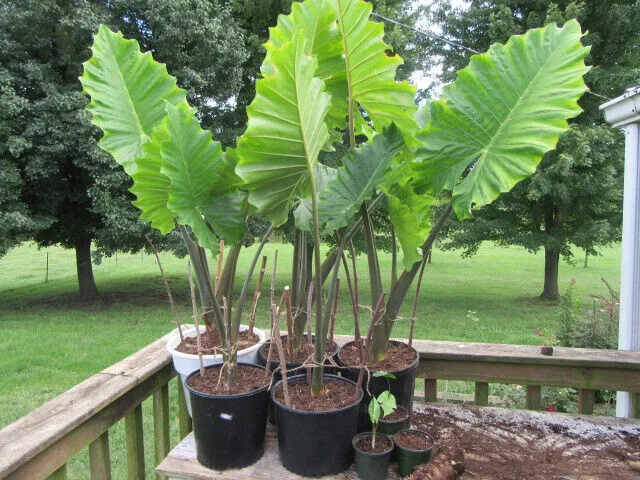
3. Xanthosoma sagittifolium (Arrowleaf Elephant Ear)
Native to Central and South America, Xanthosoma varieties have arrowhead-shaped leaves that are generally softer and more matte compared to their Colocasia or Alocasia cousins. While similar in appearance, they tend to grow in clumps and prefer slightly drier conditions than Colocasia.
- Leaf Direction: Slightly upright to outward
- Color: Light green to medium green
- Notable Features: Edible roots in some cultures (though caution is advised)
- Popular Cultivars:
- Xanthosoma ‘Lime Zinger’: Chartreuse foliage, great for vibrant color contrast.
- Xanthosoma ‘Frozen Planet’: Unique blue-green leaves with a frosty appearance.
- Best Use: Landscape plantings, large tropical-themed gardens

4. Caladium (Angel Wings or Fancy Leaf Elephant Ear)
Though technically in the same family, Caladiums differ significantly from the larger elephant ears. They are known for their spectacular multicolored foliage and smaller size. While not traditionally grouped with elephant ears by botanists, they are popularly referred to as such by gardeners due to their leaf shape.
- Leaf Direction: Outward or slightly downward
- Leaf Size: Smaller than Colocasia or Alocasia
- Popular Cultivars:
- Caladium ‘White Queen’: White leaves with green edges and red veins.
- Caladium ‘Red Flash’: Vibrant red centers with green margins and pink spots.
- Caladium ‘Florida Sweetheart’: Compact with pink leaves and green margins.
- Best Use: Bedding plants, container gardens, indoor decorative accents
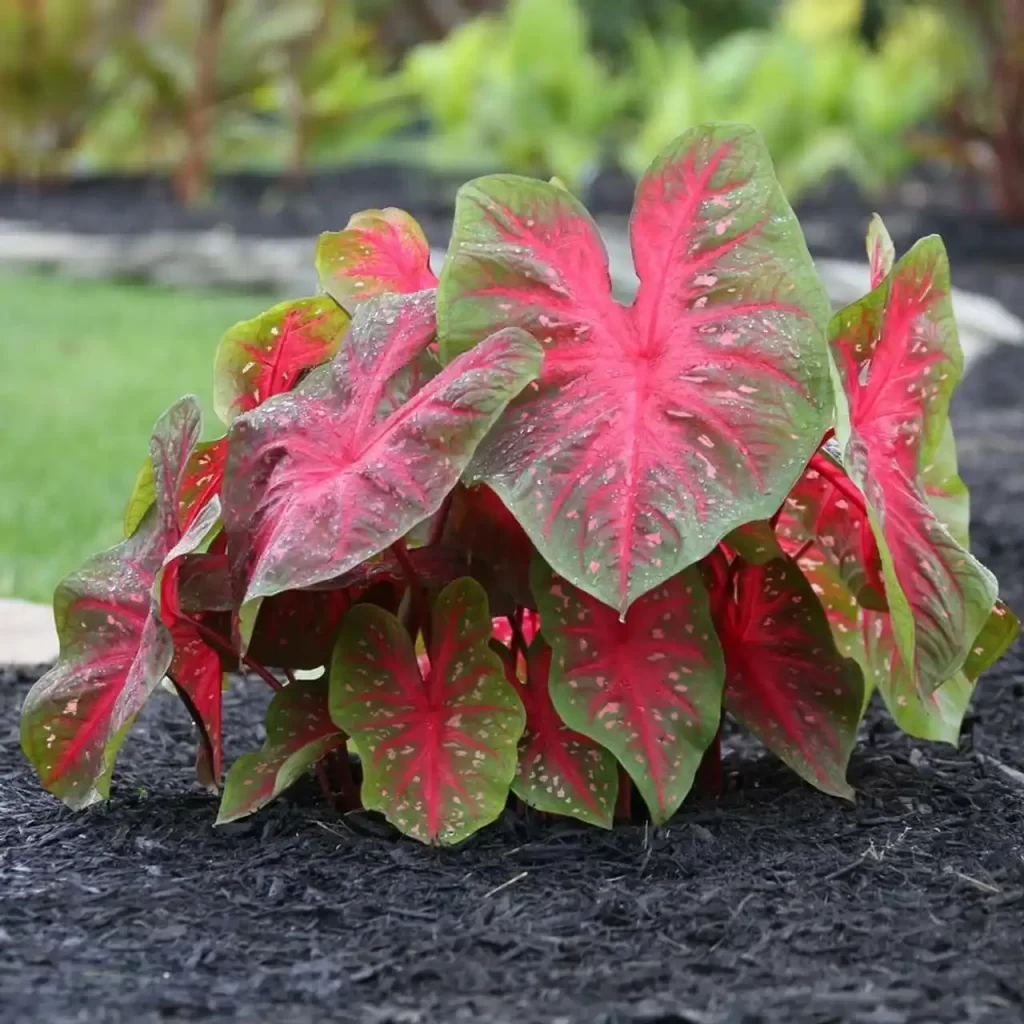
Common Problems and Solutions
1. Yellowing Leaves
One of the most frequently observed issues with elephant ear plants is the yellowing of leaves. This symptom can be caused by several factors, but the most common culprits are overwatering, poor drainage, and low light conditions. When the plant sits in waterlogged soil for extended periods, its roots begin to suffocate, leading to root rot—a condition that manifests first through yellow or wilted foliage.
To resolve this, inspect the soil to ensure it drains well and that the container or planting site isn’t retaining excess water. If the plant is indoors or in a shady spot, consider relocating it to a brighter area with indirect sunlight. Trimming the affected leaves can also help redirect energy to healthier growth.
2. Browning or Crispy Leaf Edges
Crisp, brown edges on the leaves are often a result of low humidity or inconsistent watering. Elephant ears thrive in humid, tropical environments, and when grown in drier indoor spaces or during periods of low ambient humidity, their large leaves can lose moisture rapidly, causing browning along the margins. Increasing humidity by using a humidifier, grouping plants together, or placing a tray of water nearby can alleviate this. Regular misting can offer temporary relief, but it’s not a long-term solution if the environment remains dry. Also, avoid letting the soil dry out completely between waterings, as inconsistent hydration stresses the plant.
5. Drooping Leaves
Drooping leaves can signal either underwatering or overwatering, making it essential to assess soil moisture before acting. If the soil is dry, increase watering frequency, especially during the active growing season in spring and summer. However, if the soil feels soggy, reduce watering and improve drainage immediately to prevent further damage. Another cause of drooping can be a lack of nutrients. Elephant ears are heavy feeders, and if they don’t receive enough nitrogen or other key minerals, their growth may slow, and the leaves may appear limp. In this case, supplementing with a balanced, water-soluble fertilizer can help restore vigor.
6. Stunted Growth or Small Leaves
If your elephant ear plant is producing smaller-than-expected leaves or not growing at all, it may be lacking sufficient light, nutrients, or root space. These tropical plants need abundant resources to support their massive foliage. Inadequate sunlight—particularly for indoor plants—can drastically slow down photosynthesis, reducing the plant’s energy to produce new growth. Additionally, poor soil nutrition or a pot that restricts root expansion can lead to underdeveloped leaves. To solve this, reposition the plant where it can receive bright, indirect light for several hours a day, fertilize regularly during the growing season, and consider repotting if the roots are circling the pot or emerging from drainage holes.
7. Cold Damage
Elephant ears are not frost-tolerant and are susceptible to cold injury, especially when temperatures drop below 50°F (10°C). Symptoms of cold stress include blackened or mushy foliage, which may collapse suddenly. For outdoor plants in cooler regions, it’s critical to dig up the tubers and store them indoors during winter. Indoor plants should be kept away from drafts, unheated windows, and air-conditioning vents. If cold damage has already occurred, remove the damaged leaves and allow the plant to recover in a warm, protected location.
Common Pests and Diseases Affecting Elephant Ear Plants
| Problem | Cause | Symptoms |
|---|---|---|
| Aphids | Sap-sucking insects | Sticky residue on leaves, curled or yellowing foliage |
| Spider Mites | Tiny arachnids, thrive in dry conditions | Fine webbing on leaves, speckled discoloration |
| Mealybugs | White, cotton-like sap feeders | Cottony clusters on stems and undersides of leaves |
| Leaf Spot Fungus | Fungal spores in humid, wet environments | Brown or black spots with yellow halos; premature leaf drop |
| Root Rot | Overwatering, poor drainage | Wilting, yellowing leaves, mushy roots, foul smell |
| Bacterial Blight | Bacterial infection due to high humidity | Water-soaked lesions on leaves, spreading rapidly |
How to Propagate Elephant Ear Plants
Propagation is best done by dividing tubers or rhizomes during the dormant season or early spring.
Step-by-Step Guide:
- Carefully dig up the parent plant.
- Rinse off excess soil to locate natural divisions.
- Use a clean knife to cut sections with at least one growing point (eye or sprout).
- Allow the cut sections to dry for a day.
- Plant divisions in fresh soil, keeping the top of the tuber just under the soil surface.
Water well and place in a warm, bright location. Within a few weeks, new shoots should appear.
Bonus Tips for Bold, Tropical Garden Displays
To make your elephant ear plants stand out:
- Pair with colorful companions like caladiums, cannas, and coleus.
- Plant in groups for dramatic foliage walls.
- Use color varieties like ‘Black Magic’ (Colocasia esculenta) for contrast.
- Add water features: Colocasia can even grow in shallow ponds!
With creative landscaping, elephant ears become the centerpiece of any tropical garden theme.
Conclusion
Mastering elephant ear plant care takes a combination of consistency, patience, and environmental awareness. From understanding their soil and water needs to optimizing light, humidity, and seasonal transitions, every detail contributes to the dramatic, oversized leaves these tropical beauties are loved for.
Whether you’re growing them as striking houseplants or bold outdoor statements, these expert tips will set you up for success. Happy growing!
